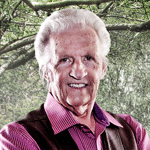
Vernon Swaback
gb&d: An obvious influence on your work is your time with Frank Lloyd Wright. How would you define his leadership style?
Vernon Swaback: Wright would say that he was not a teacher and Taliesin was not a school. We were there to help him. If we got something out of it, all the better. He would speak formally Sunday mornings about politics, and poetry, anything.
gb&d: How did he shape you?
Swaback: Wright was balked at by educators who said he was just creating a bunch of little Frank Lloyd Wrights. With a characteristic twinkle in his eye, he would deny the allegation, then add, “Besides, there’s no such thing as a ‘little Frank Lloyd Wright’” [laughs]. That’s not what he was about. You couldn’t be around Wright without becoming a better version of yourself.
gb&d: How do you mentor another person?
Swaback: There’s no formal way. It’s a natural phenomenon of working together and being committed to the endless pursuit of ideas. There are times when someone will make an appointment to see me, and we just talk. I have at times taken individuals to jobsites or to design-related events. I’ve written nine books, but each individual has to find their own way. No one can do that for another.
gb&d: Seeing the legacy that was left by notable architects you’ve worked with, do you ever think of your own legacy?
Swaback: I’ve received many wonderful accolades, but most of all, I remember Wright saying, “When they call you a genius, don’t believe them.” The reality is that I’m not sure I have any idea how to assess who I am or what I’ve done other than living with the uneasy feeling of always feeling like an outsider. I just don’t think of myself as anyone other than someone outside the mainstream who has had extraordinary opportunities. I still have a sense of being lost, reaching toward something.
gb&d: What is it that you’re reaching for?
Swaback: A little over two years ago we created the public charity 501(c)3 Two Worlds Community Foundation. It occurred to me that those who are most involved in adding to the built environment are more concerned with codes, ordinances, financing sales, and marketing of their own projects than what everything is adding up to becoming. At the other extreme are the high-level institutes that are more at home in the clear atmosphere of policy than what is happening on the ground where they live, work, learn, shop, and play. These are two very different worlds. My foundation has been designed to attract and give these two worlds incentives and permission to interact, starting with those who have not yet settled in to the challenges and comfort of either of the two worlds.

